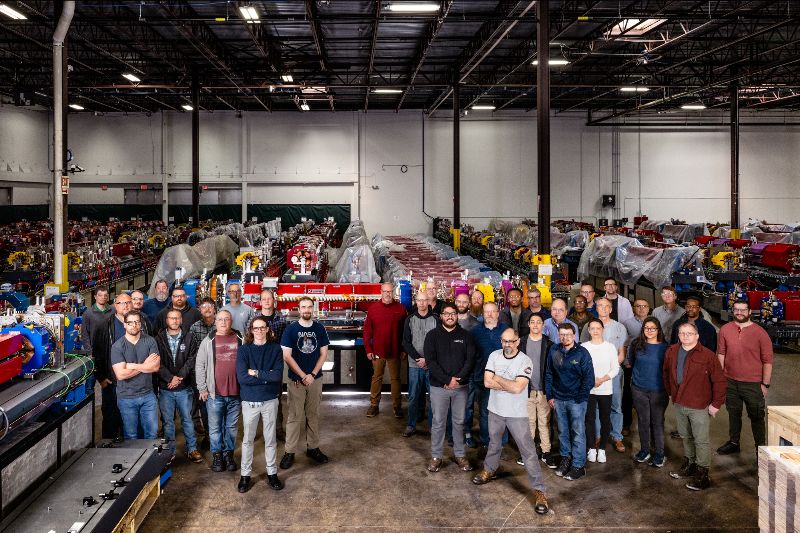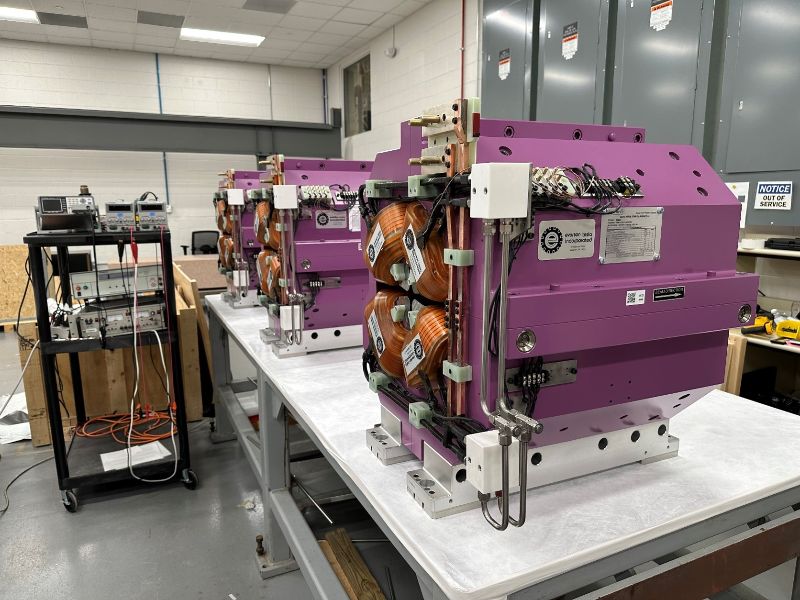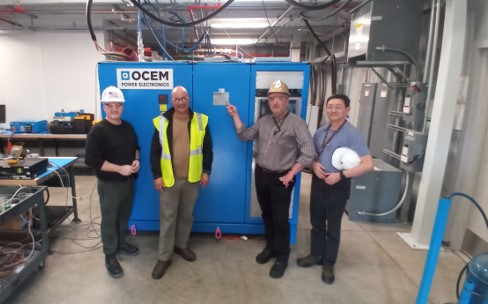One month into the shutdown, and we’re off to a great start – not just the Upgrade, but ALL work across the facility. The team, including Photon Sciences staff, teams of experts from across the Argonne site, and the small army of contractors on site for the removal effort, has been working hand in hand to undertake this massive project. In the first month, the progress has been extraordinary and the safety record has been exemplary.
On April 17, we ended user operations at the original APS for the final time. It was an emotional day, full of celebrations and remembrances, with special guests from the U.S. Department of Energy Office of Science on hand. The APS has, for 28 years, been an amazing machine, and produced results beyond anything that could have been imagined. Our upgrade is being built on the shoulders of giants. If you want a small glimpse of what it was like to be there as the shutters were closed, the video below will give you an idea.
During the following week, we kept the accelerator complex running so we could test out a new piece of technology, one that is key to future operations. It’s called the Injector Extraction Timing System (IETS), and it’s needed for a simple reason: the new APS storage ring has a slightly smaller circumference than the original one, and is therefore going to operate at a different radiofrequency. Since we’re keeping the original booster, which operates at the original frequency, we need a timing system that addresses this change.
I’m very happy to say that the test of the system was a success. The IETS team put the new system through its paces over the course of the week, injecting electrons from the booster into the correct storage ring “buckets” without any issues. This is a must-work piece of technology, and this test proved the performance of the system – and once again demonstrated the excellence of the experts here at the APS who bring such systems to life.
The APS accelerator complex was shut down on April 24, and removal of the original storage ring and associated systems began in earnest. The photo above shows the first girder of magnets being taken out of the storage ring before being loaded onto a truck for transport. As of this writing, all of the 200 girders and all insertion devices are out. Removal of components from the mezzanine level of the APS experiment floor is continuing at a similar rate.
With removal progressing well, of course we are preparing in parallel for the installation of new components. Installation will kick into gear in early July. The central work will consist of the installation of the 200 new storage ring modules, which brings together components from many teams, on site and at industrial partners worldwide.
The photo above shows members of the module assembly team with the 100th completed module. This was a few weeks ago, and we are already up to more than 135 completed modules, ready for transport to and installation in the APS facility. Again, I’m grateful for the hard work of everyone involved – completing a module takes continued attention to detail at all times, but isn’t possible without the successful efforts of everyone else delivering quality components to the assembly team. Here are just a few of those stories.
These are the final Upgrade magnets to be delivered, before their acceptance testing. Our magnet design and measurement team has worked for 5 years with industrial partners to ensure that all 1,321 magnets needed for the new ring, plus spares, are here, meet our demanding standards, and are ready to be installed. A tip of the hat to the team.
Similarly, this photo shows the vacuum team and one of the last production chambers needed for the new storage ring. These systems, when all connected, will span the entire circumference of the ring – about 2/3 of a mile – and replicate the vacuum of deep space to limit the interactions between the circulating electrons and residual gas molecules. Each of the 200 modules of the ring has its own vacuum system, and each had to be precisely designed and fabricated.
And as a final example for this month, you are now looking at the last APS Upgrade power supply to arrive. The upgrade power supply team has been procuring and validating thousands of power systems for years, and with this delivery, that extraordinary phase of the effort comes to a close.
These achievements are great, but it is critical to note that we have accomplished them safely. Our top priority has been and will continue to be the safety of everyone working at the APS. The long shutdown is unlike any other in the past three decades, and so there is a lot to learn. It’s an exciting time where we will learn and improve as we go. And we’re off to a safe start, thanks to the awareness, discernment, commitment and excellence of every member of the team.
This month’s report has been pretty accelerator centric, but rest assured the work on the experimental floor is progressing well also. We’ll talk more about that next month. In the meantime, news updates are posted regularly on the web -- bookmark the APS Upgrade home page.
Cheers. Be safe!
Jim Kerby
Director, APS Upgrade Project





